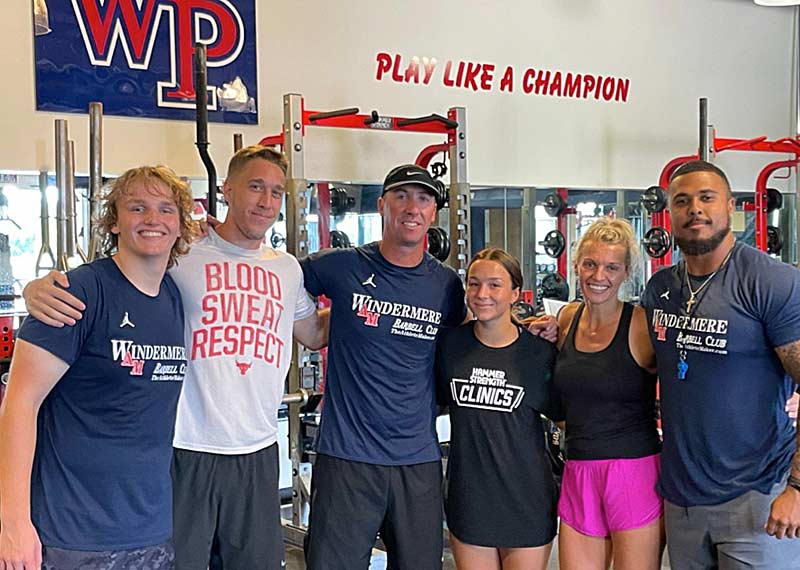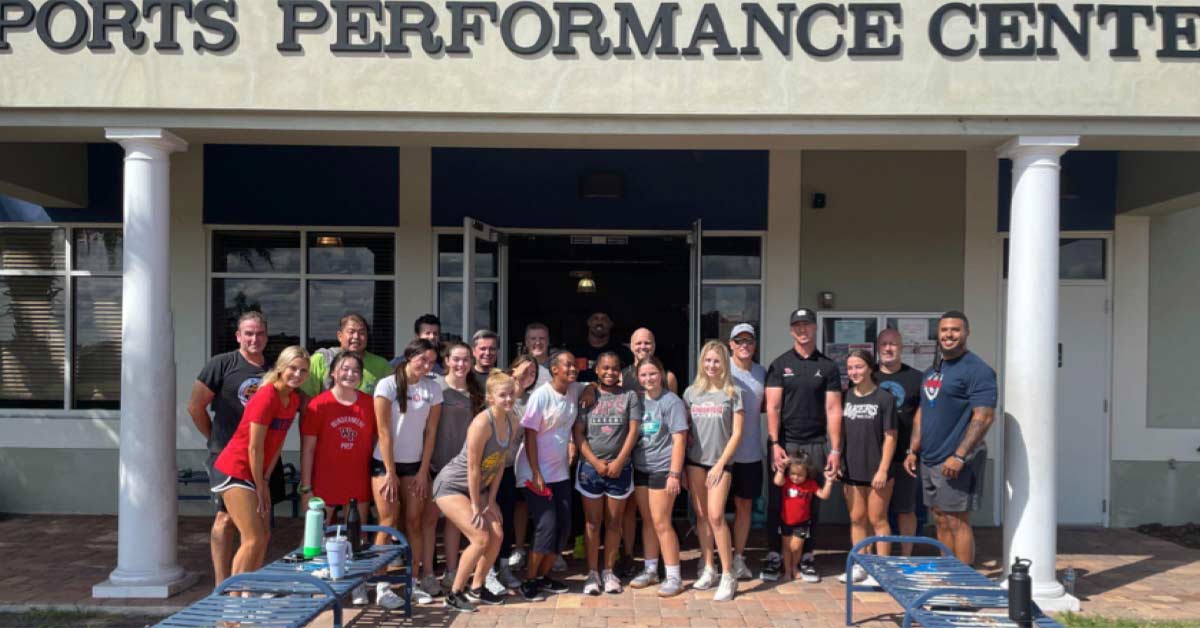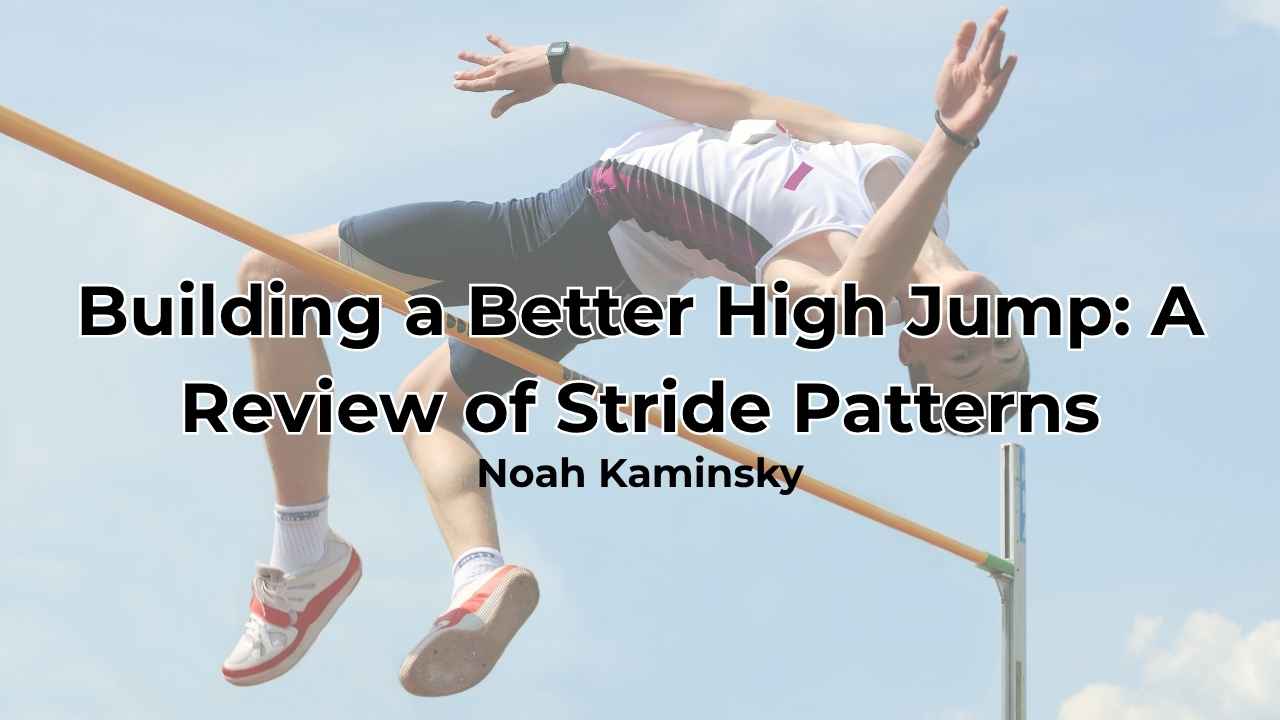Being a high school strength and conditioning coach is a highly rewarding career—we have the opportunity to not only make young people healthier, stronger, and faster, but also can instill lifelong values of hard work, overcoming adversity, teamwork, perseverance, and the ability to become the best at getting better.
Even with all those intrinsic benefits of coaching at the high school level, many coaches in this profession still have issues they often have to deal with, ranging from:
- Sport coaches not trusting their strength coach and wanting to run their own strength program for their team.
- Parents of student athletes not believing in the strength coach and wanting to tell them how best to do their job.
- Student athletes not wanting to train at their school, believing that more is better and wanting personal training from a private sector coach.
I have been blessed to work at two different high schools in my career and can say that I’ve rarely had to face these issues. I don’t think that this is because I’m a better coach than my peers in the profession, but I do think part of the reason I haven’t had to deal with these challenges is that I am very open and welcoming to all parties in my weight room. Having an open-door policy has helped to gain buy-in from all parties involved and allowed our strength program to continue to grow and succeed.
Having an open-door policy has helped to gain buy-in from all parties involved and allowed our strength program to continue to grow and succeed, says @KurtzM3. Share on XIn this article, I will outline ideas and principles I have used to avoid regularly facing those common issues.
1. Have Core Values for Your Program and a Strength & Conditioning Philosophy—and Be Ready and Able to Explain It
I am entering my fifth year at my current school and I vividly remember having countless meetings with coaches, student athletes, and their parents explaining who I am and what my background is. I also had many meetings on how I design my strength and conditioning program. When meeting with the head sport coach, I wanted to convey to them how I can best help their team be successful. When meeting with the parents of student athletes, I had to convey to them how I can help maximize the potential of their son or daughter in their sport and in life.
I came to my current school after being named the National High School Strength Coach of the Year in 2016 and State Coach of the Year two times. This held some weight, but I still had to prove to everyone that I would be best for their team, their child, and for them personally. Some coaches may shy away from these conversations, but if we can embrace it, the buy-in and support will come much quicker.
I had and still have these conversations with our head sport coaches, the parents of my student athletes, and with my athletes. I want them to always understand the why behind my programming.
We base our training around our five core values. Those values are:
- Protect. Every movement in the weight room is designed to protect the student from being injured in sports, the weight room, and everyday life.
- Move Well. Students will be able to perform fundamental movement patterns with adequate mobility and stability in ways that will lead to a healthy, well-rounded lifestyle.
- Move Strong. Students will perform multi-joint weight training exercises to develop the foundational strength base needed for optimal performance in all areas of life. Movements will be progressed and regressed according to a variety of factors, including age, movement competency, and trust level.
- Move Fast. Our linear speed, reactive agility, and deceleration training will enable the student athlete to MOVE FAST in competition.
- Thrive. Students will develop skills that will translate to improved sport performance, a lifetime of wellness, and the ability to overcome obstacles, maximizing their potential in all areas of life.
At the middle and high school level, one of the challenges for a strength and conditioning coach is breaking their athletic development program into different blocks or levels. There is a huge difference between training a 13-year-old freshman versus an 18-year-old senior.
There are several factors to consider when determining how to differentiate your program to meet each student athlete where they are. These include:
- Birth year age
- Developmental age
- Training age
As mentioned above, our first core value is for our athletes to be able to move well. Therefore, the main goals for our younger athletes are to teach them good mobility, stability, and proper fundamental movement patterns (like a bodyweight squat, lunge, hinge, push, pull). On top of that we want them to enjoy working out and training. We talk to them a lot about the coaching triangle of accountability, responsibility, and a non-judgmental environment.
The main goals for our younger athletes are to teach them good mobility, stability, and proper fundamental movement patterns, says @KurtzM3. Share on XWhile some students may be at the same birth age, they may be at a different age in puberty development. Therefore, we need to factor that in to create a program that meets each of them where they are.
Additionally, some students may have been training with me for multiple years while some that are the same birth age may be just starting to train. This is what we call their training age and again must be considered in our programming in order to meet them where they are.

We also have our student athletes fill out questionnaires about themselves. This allows me to get to know them on a more personal level. Those questions can vary, but some of my favorites are:
- Who do you look up to and why?
- What is one thing most people don’t know about you?
- What are the three most important things in your life?
- How do you like to be coached?
The how do you like to be coached question is huge. Some athletes like a loud coach, some do not. I want to know what makes each student tick and how they are best motivated. Therefore, I use different coaching styles with each student athlete.
Some athletes like a loud coach, some do not. I want to know what makes each student tick and how they are best motivated, says @KurtzM3. Share on XI want all of my student athletes and the sport coaches that I work with to know that my number one goal is to help them reach their goals in the fastest and most efficient way possible. I am their number one fan and am rooting for each and all of them to succeed.
2. Have an Open Door Policy for Coaches, Parents, and Community
While I am our school’s Head Strength & Conditioning Coach, I make it a priority to explain to every stakeholder that it is my job to help them reach their goals in the fastest way possible. I want to explain to the head sport coaches that I am their assistant coach. My goal as the strength coach is to put the head coach’s athletes in a position to be strong, fast, explosive, and durable for their sport. Therefore, it is my plan to be the head coach’s biggest competitive advantage.
My goal as the strength coach is to put the head coach’s athletes in a position to be strong, fast, explosive, and durable for their sport, says @KurtzM3. Share on XAdditionally, I know that I am not controlling the athlete’s playing time or who makes varsity and who does not—the head coach is ultimately deciding that. So, I want the head coach to also have a presence in the weight room during their team’s workouts. I do not want them to think that the weight room is my domain—I want them in the weight room with me, because if they show their athletes that it is important to them, then it will be important to the athletes as well.

A complaint from many high school strength coaches is that the parents of their student athletes do not trust their programming in the weight room. As referenced earlier, being able to explain the why behind what you do will go a long way in getting that support. But something that has helped me even more is inviting parents in to train with you as well.
Being able to explain the why behind what you do will go a long way in getting support from parents, says @KurtzM3. Share on XAt my previous school we would hold what we called Falcon Family Bootcamps. The parents and their kids (my students) would come and train with me in the evenings. At my current school, we hold what we call a Morning Machine Workout group for parents. Even though the program design is much different than how we train the student athletes, getting to know the parents has gone a long way in getting them to believe that I have their child’s best interest in mind.
Another way we have instituted an open-door policy in our strength and conditioning program is by hosting an annual Dad’s & Daughter’s Lift. On the weekend, we have our female athletes invite their father to a workout that is designed by me. While I design the workout, the daughters help to coach their dads through the workout. This is a great time for me to get to know the fathers and the fathers to get to know me as a person and a coach. Additionally, it’s amazing to see the interactions between the dads and daughters. Oftentimes, the dads hadn’t realized how strong and competent their daughters had become as lifters.
We also hold a community workout to support a worthy cause. Last Thanksgiving, we hosted a community workout where attendees brought canned goods or gift cards in to benefit needy families for Thanksgiving. This was an effective way for more of our parents and community to get a glimpse into our strength program and meet our coaches, and it was a way for athletes to learn that the weight room can be about much more than just becoming bigger, stronger, and faster.
Finally, anyone who has ever run a high school weight room has likely struggled with having upwards of 40, 60, or even 100 student athletes in the weight room at the same time. How can one coach properly supervise and coach this many athletes at one time? We love to get our sport coaches in the weight room to assist us, but oftentimes that is not enough. By holding our Falcon Family Bootcamps, Morning Machine Workouts, and Community Workouts, we have been blessed to have parents, current students, and older siblings want to volunteer in our strength program. This is amazing and allows me to get more eyes on our student athletes in the weight room.
3. Develop A Trust Level with Your Student Athletes and Private Sector Coaches
I hear this from many coaches I speak to: “I am having trouble getting my student athletes to be consistent in our after school or summer workouts. They want to go to XYZ private gym or personal trainer.”
I think everyone can agree about the countless benefits of training at school surrounded by your teammates. But we also don’t want to discourage our student athletes from always looking for the best options to become the best.
We don’t want to discourage our student athletes from always looking for the best options to become the best, says @KurtzM3. Share on XOne of the best ways to tackle this challenge is to develop trustworthy relationships with private sector gyms and coaches in the area. Some of my best friends in the strength and conditioning industry (Jason Brunson, Arena Athletes; Josh Ortegon, Athletes Arena; Langston Provitt and Trevor Anderson, TNXL; and Wes Murray, D1 Training) have been made through discussions about my student athletes training with them. Everyone in this profession wants the athletes they work with to become the best version of themselves. So, by our student athletes also training with private sector coaches, hopefully it can help them reach their promised land faster.
If the private sector coach and I are on the same page, we can work together to maximize the hours that athletes spend with us. We can have that open line of communication so we know what that student athlete has done outside of working with us. Therefore, we both can fill in the areas that could use extra time and work.
Empowering the Next Generation to Be the Best Version of Themselves
We are in a service industry and our goal is to maximize the potential of every person we work with. One of my favorite quotes is one from Theodore Roosevelt that many know: “No one cares how much you know until they know how much you care.”
We are in a service industry and our goal is to maximize the potential of every person we work with, says @KurtzM3. Share on XIt is my hope that when our athletes, students, coaches, and parents truly believe that our main priority is to not only make everyone we come in contact with the best athlete possible, but also the best possible version of themselves, many of the issues with buy-in will be eliminated.
Thank you to every coach in this industry. I truly believe we have the best and one of the most important jobs in the world!
Since you’re here…
…we have a small favor to ask. More people are reading SimpliFaster than ever, and each week we bring you compelling content from coaches, sport scientists, and physiotherapists who are devoted to building better athletes. Please take a moment to share the articles on social media, engage the authors with questions and comments below, and link to articles when appropriate if you have a blog or participate on forums of related topics. — SF




